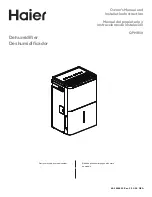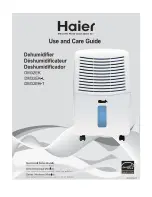
HUMIDIFIER, FOR CIRCULATED WATER
Installation and maintenance instruction
9
FläktGroup
DC_8642GB 20180131_R0
Specifications are subject to alteration without notice
10
10 000
6000
2000
4000
1000
600
400
200
100
60
40
20
10
6
4
2
1
5
6
7
8
9
8,5
9,5
4
2
6
20 40 60 100
1000
10 000
BEFEUCHTER (Diagram)
Calcium Ca2+ mg/l
pH value
Max. pH aluminium
Bicarbonate HCO
3
– mg/l
Pr
ecipitation zone
Transition zone
Safe zone
TO DETERMINE THE WATER QUALITY ZONE
The following information is needed to determine the water
quality zone:
• pH value
• Bicarbonate concentration (HCO
3
), mg/l
• Calcium concentration (Ca
2+
), mg/l
Information on the water can be obtained from the local water
works or by water analysis.
CHART 1
Zone 1 is the safe zone, where the water is soft or demi-
neralised.
Zone 2 is the lower part of the transition zone, where
the water is normally of drinking water quality.
Zone 3 is the upper part of the transition zone, where
the water is relatively hard.
Zone 4 is the precipitation zone, where the water is very
hard. The water must be partially demineralised so that
the result will be a quality that corresponds to zone 2–3.
The water should not however be demineralised so much
that it falls into zone 1.
EXAMPLE
Data from the local water works:
pH = 7,6
Bicarbonate 70 mg/l
Calcium 30 mg/l
Chart 1 indicates zone 1 (the safe zone)
Apart from the risk of lime precipitation, the concentrations
of chloride (Cl) and copper (Cu) must be checked.
The concentration in fresh water must not exceed 50 mg/l
for chloride and 0.02 mg/l for copper.
HOW TO USE THE CHART
Enter the chart on the right hand side with the bicarbonate
(A) rate and the Ph (B) and find the intersection (C). run a
line over the chart with the calcium rate (D) and find the
intersection in the applicable zone.
D
B
A
C
4
3
2
1


































